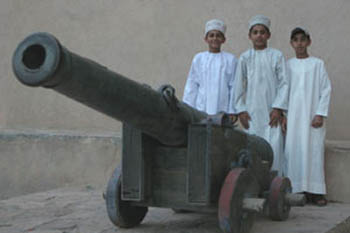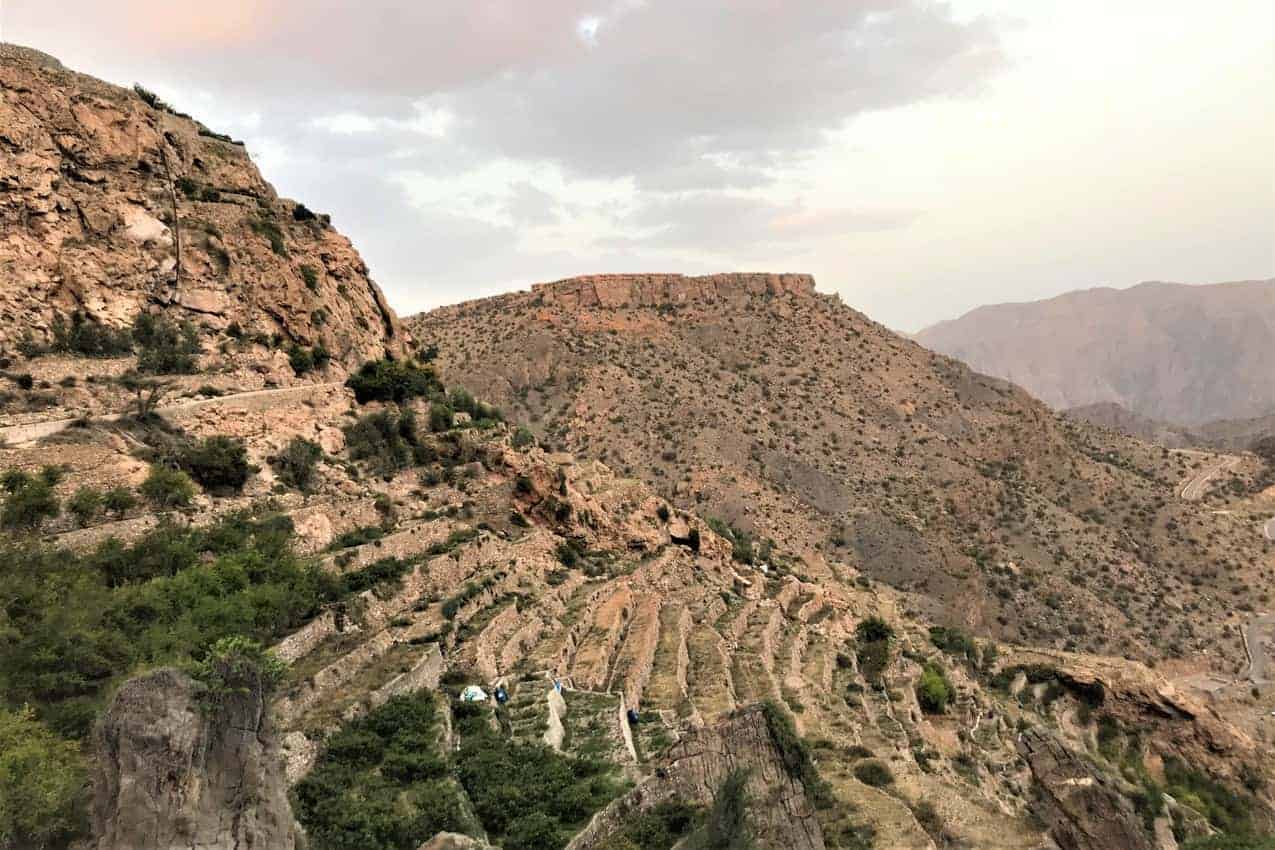
Three Excellent Hiking spots in the Sultanate of Oman
By Erin Coyle

The Sultanate of Oman is situated near the UAE and Saudi Arabia on the Persian Gulf.
It is known for its date trees, hiking, snorkeling, diving, desert, beaches, and hospitality.
There will always be an Omani who will be happy to assist if there’s ever time needing help, including car rides. They will invite people into their homes, offer them coffee, tea, and snacks, and talk all about Omani culture.
Having lived here in Oman for over two years, I can attest that these statements are true. To dispel other rumors, it is super safe to travel and live here and yes there is more nature than just the desert.
There are hiking spots in every region, but one region to check out is Ad Dakhiliyah which includes Jebel Akhdar, Wakan Village and Misfat Arbiyeen.
These locations have their own unique character, including terraces and farms, apricot and date trees, and even brick cement houses situated within the hiking path. Read on if hiking is something that is desired when traveling.
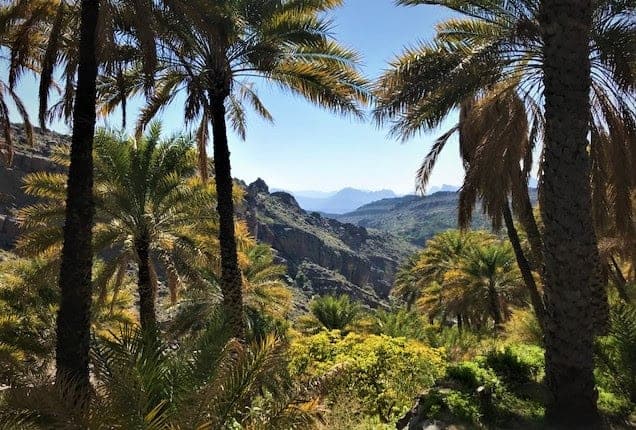 Jebel Akhdar
Jebel Akhdar
From Muscat, Jebel Akhdar is 150 kilometers away. A four-wheel-drive vehicle is needed but just before entering the winding narrow road that leads to the top, cars will be parked offering rides for a fee.
Once arriving, it is easy to walk and get lost while walking through farms, terraces, and villages.
The terraces resemble the layered rice terraces in China. A bonus of this mountain is going to Al Sogara village where rose water is made.
Hiking to the village takes about forty-five minutes depending on how many people there are and the pace of the group. The hike for this destination allows for views of the brown and green terraces, and lush green farms.
There are chances to spot pomegranate trees when hiking in March and April as this mountain is known for this sweet and organic fruit. But hikers are not allowed to take them from the trees.

The Village
It is easy to spot the village because soon wooden doors with flowers and other designs will be decorated on them.
These doors also come in baby blue and pale green. These ancient stone houses are still occupied by the locals.

The first time I hiked here was for an Iftar hike. Iftar is the first meal people eat to break their fast during Ramadan.
Our guide’s plan was to stop in this village so we could witness the rose water making process. All of a sudden, a man who appeared to be in his eighties and one of the main guys in charge of making the rose water gave us a big greeting with ‘salam alikum’ (peace be upon you).
Rose Water
Once the rose petals have been picked and dried, they are placed in a large plastic bowl.
The petals are then mixed with water in copper clay pots. Four small pots are placed on the cement stoves and once boiled; a wicker lid is placed on top of them.
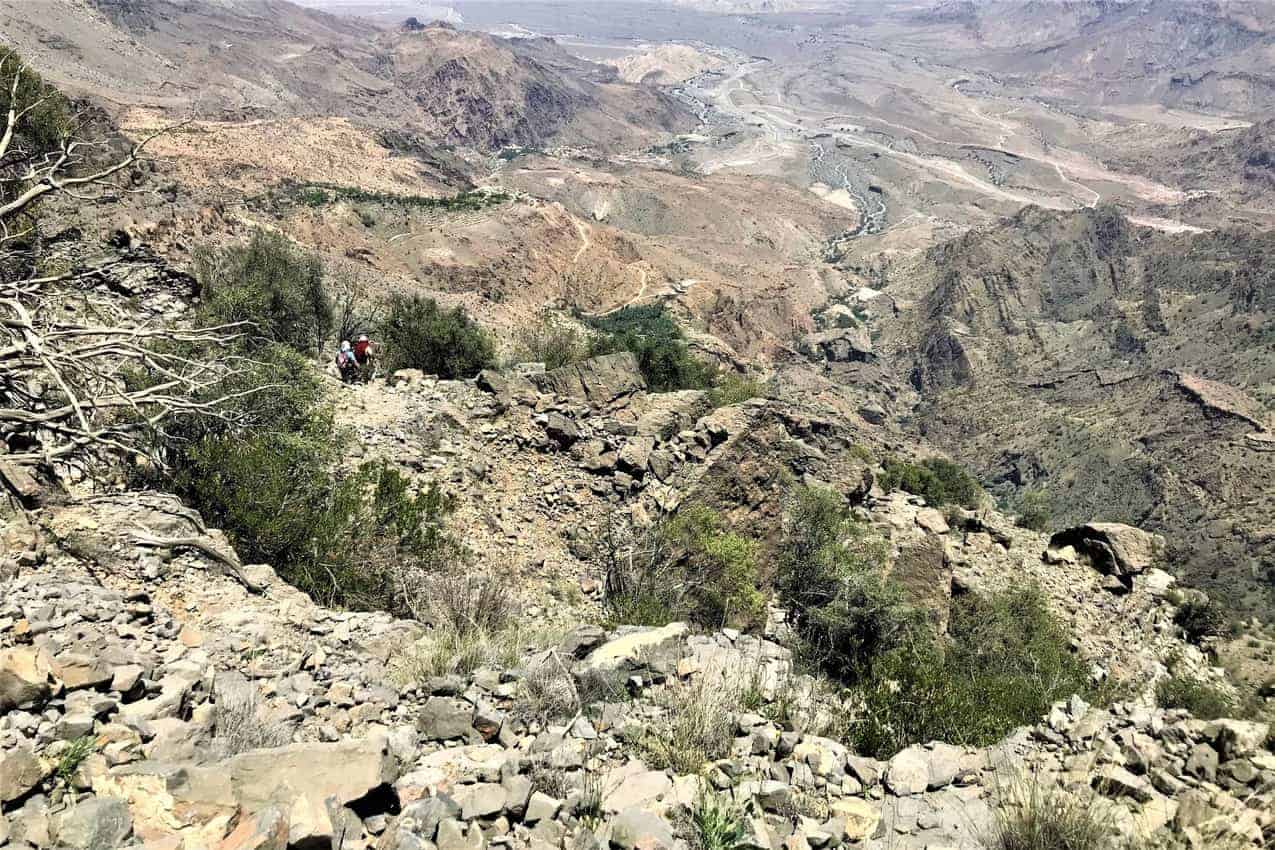
He was dressed in a simple white t-shirt and an ankle-length cloth white thobe wrapped around his waist, reminding me of a tablecloth.
The mixture then settles for a few days before bottling the water. The bottles are sold here for 8 rials (about $20). Watching this man make the rose water is mesmerizing because of all the effort that goes into this; from the picking to the drying to the boiling and then bottling. He also did not seem to mind twenty people taking turns to take pictures of this process. The season is from the end of March to the beginning of May.

General information
It is easy to do this hike in a half-day, so it is possible to return to Muscat in the late afternoon. Some camp on top of the mountain, but if arriving between November and February, bring lots of warm clothes.
If camping is not your style, it is possible to stay on top of the mountain at two resorts.
Alila Jabal Akhdar and Anatara Al Jabal Al Akdhar. Both require four wheels, but they do offer pick-ups from the bottom for an extra fee.
Alila Jabel Akhdar can be found here.
A mountain view suite starts from 252 rials a night (about $654) but they do have other room options available. Anatara Al Jabal Al Akhdar offers a premier canyon view room starting at 109 rials (about $285).
Another good spot to check out in this region is Misfat Al Abriyeen.
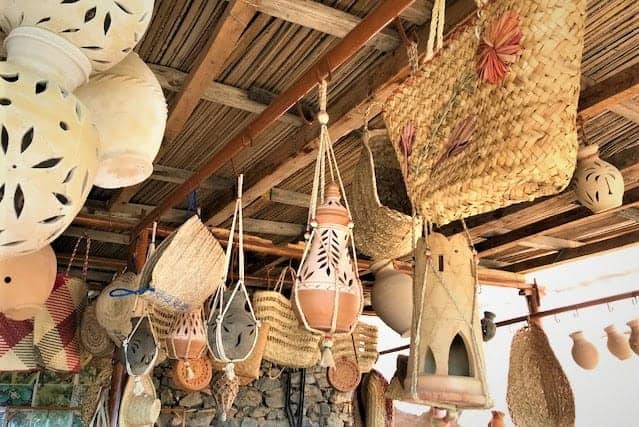
Misfat Al Abriyeen
This is one of the oldest villages featuring clay mud houses as it sits 1,000 meters above sea level.
One can either drive about 250 kilometers from Muscat or head here after going to Jebel Akhdar.
It will take about thirty minutes from Jebel Akhdar. A four-wheel is not needed for this village. It is easy to spend about an hour or two if time is a factor.
However, having visited here three times and finally staying the night, it was well worth it. There were many chances to enjoy the greenery, massive date trees, and taking time to stroll around the narrow alleys admiring the bright colored decorative doors with flowers and other designs on them.
Before strolling around
The village is less of a hike and more of a stroll and wandering around type place. Before entering the village, a shop on the right-hand side called Bait Misfah sells honey, rainbow-colored straw baskets, rectangular wooden jewelry boxes and other traditional items. The frankincense honey has a sweet taste with a hint of a light smoky flavor but not too powerful. Another one to try is the Luban flavored honey.

Dress
Before entering the village make sure to dress appropriately. It is advisable for women to wear long pants and make sure arms are covered. Men should also not wear shorts and there will be signs advising this. In fact, my Omani friend was wearing shorts when we went the first time and a local man told him he could not enter.
Wandering begins

There are signs leading the way, but one can go in a couple of directions when entering this village. Always look for the red, white, and yellow-painted flags which will lead you to the right places, especially if you are directionally challenged like me.
Even with the flags, I sometimes wander in the wrong direction, thinking it could take me to an undiscovered spot. The first thing to notice is the large date and banana trees that surround the area keeping the hotels and houses hidden.
Rainbow Doors
It is easy to wander through the narrow alleys filled with rainbow-colored doors with flowers and other designs decorated on them.
My favorite is this pale green one. It is divided into four squares and each one displays pale blue, pink, and yellow potted flowers painted on the outside.
If you are walking toward Misfah Old House, stop and take a picture by the turquoise door. The door blends in well with the greenery while the date trees surround this empty old house. While walking further down, eventually falaj’s will appear.
Follow the path of the falaj’s which will take one through farms and views of the mountains from the other side. In January, the date tree colors are a mix of pale yellow and hints of golden orange. The colors are a reminder of the Fall season.
General information
There are plenty of guesthouses to stay at, but a recommended one is Misfah Old House. It is a guesthouse with traditional Omani decoration. When walking up, one will notice the hanging clay pottery water pitchers dangling from the open window.
This clay house has many sleeping options, with twin rooms starting at 60 rial (about $155). There is an option to add another mattress. During Covid, they have been offering specials, so go to this website to get more details. The price is worth it, especially while having breakfast listening to the sounds of birds and water flowing from the falaj.
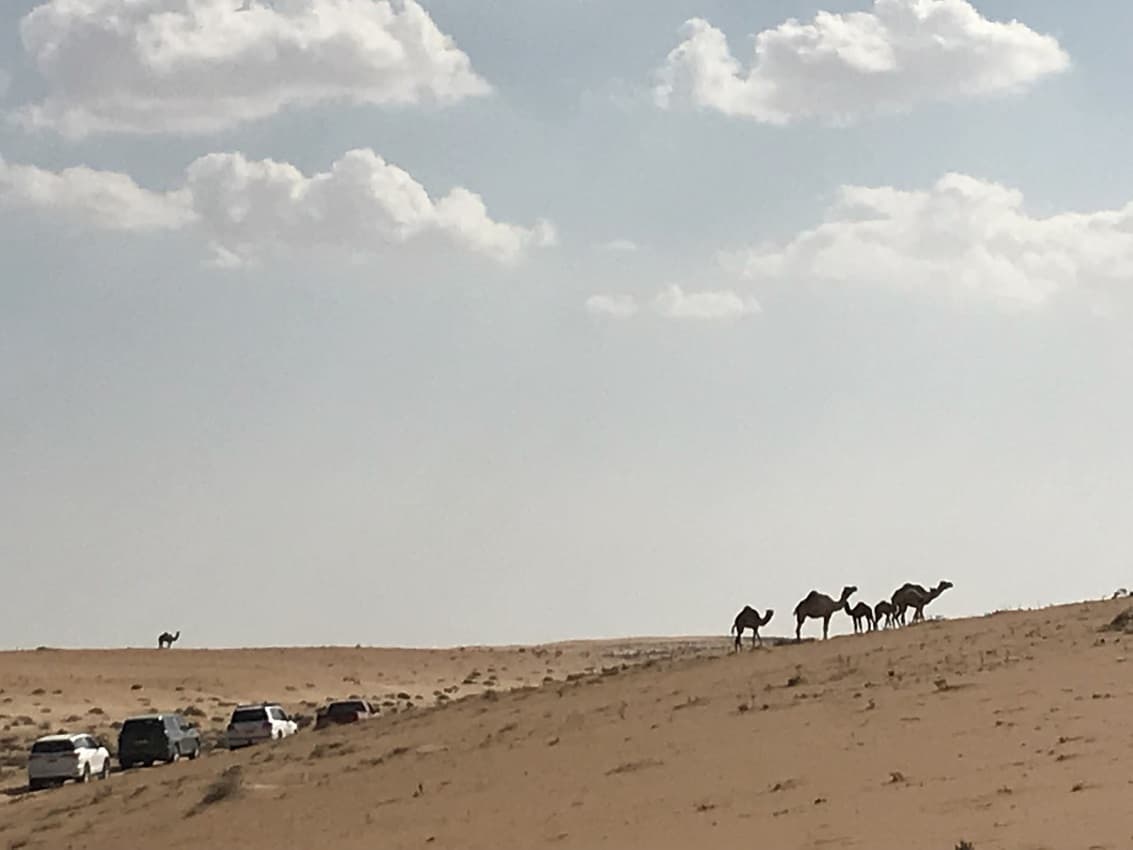
Wakan Village
Having saved the hardest hike for last, this village is about two hours from Muscat or can be accessed easily on the route from Jebel Akhdar. A four-wheel can be driven up the dirt road until reaching the mosque which is the starting point for the hike. Parking at the bottom of the dirt road is also possible and should take about thirty to forty minutes to reach the starting point.
Before the hard hiking begins, it is easy for any fitness level to walk up about 100 stairs. While walking up there will be grape, pomegranate and apricot trees along the way. There will also be large date trees settled in between lush green farms.
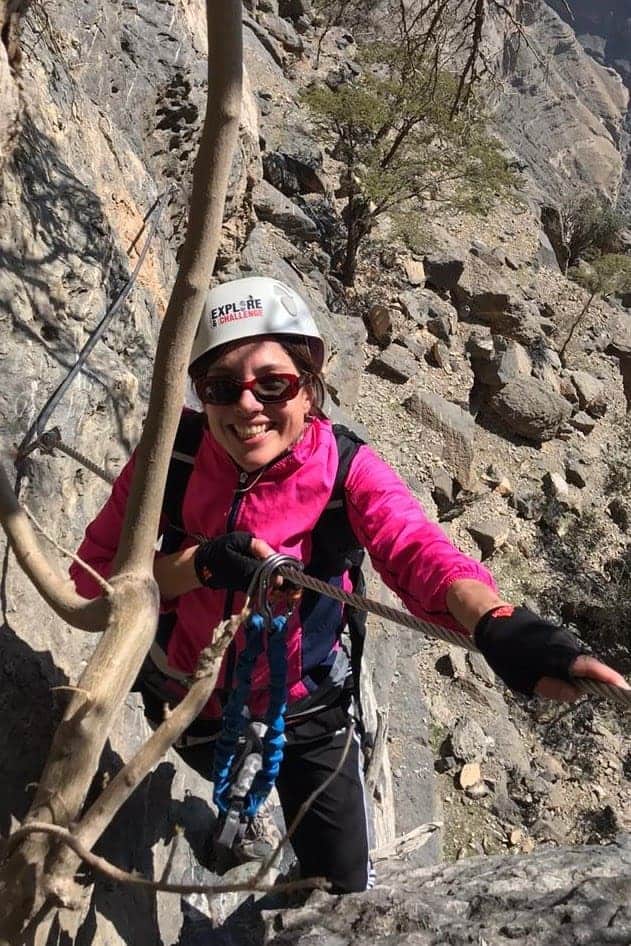
In December, the date trees will have a mix of orange and yellow on them, resembling fall colors on the East Coast. In March, expect to see several dozen apricot trees and if you are lucky, a local will offer you some free samples.
The hike
For those willing to take on a challenge, once the end of the stairs, it is time to ascend to the top of the mountain.
The scenery is simply walking up on loose rocks, walking carefully toward the edge of cliffs while following the red, yellow, and white painted flags on the rocks. Do take time to look across as there will be at least ten mountain tips almost looking fake from so far away.
The first time I did this hike was in March. In Oman, March can have temperatures of over 85 degrees, but the guide insisted it would be so much cooler on the mountain. Well on this day, there appeared to be no shade, no breeze, and just the hot sun beating on my face.
His comment was ‘oh normally it is not this hot, but today seems to be different.’ So, our group of fifteen began the hike. About two hours into it, several stopped and did not want to continue because of the heat. So, six of us carried on while taking short breaks in between.
Every time I looked up; the top seemed so far away. Another hiker kept saying we were almost there. Well, their version of almost there, and my version is completely different.
Almost there to him meant another two hours, while mine meant twenty minutes tops. We kept motivating each other as we ascended on loose rocks, climbing carefully toward the edge of the cliff at times while going over larger sturdy rocks as well.
The view from the top
After huffing and puffing, the top of the mountain had appeared. All around there are different shapes of mountains in shades of light brown and green. The feeling of this challenging accomplishment is a mix of not believing this hike was achieved, proud that it was completed and happiness that the top was finally reachable.
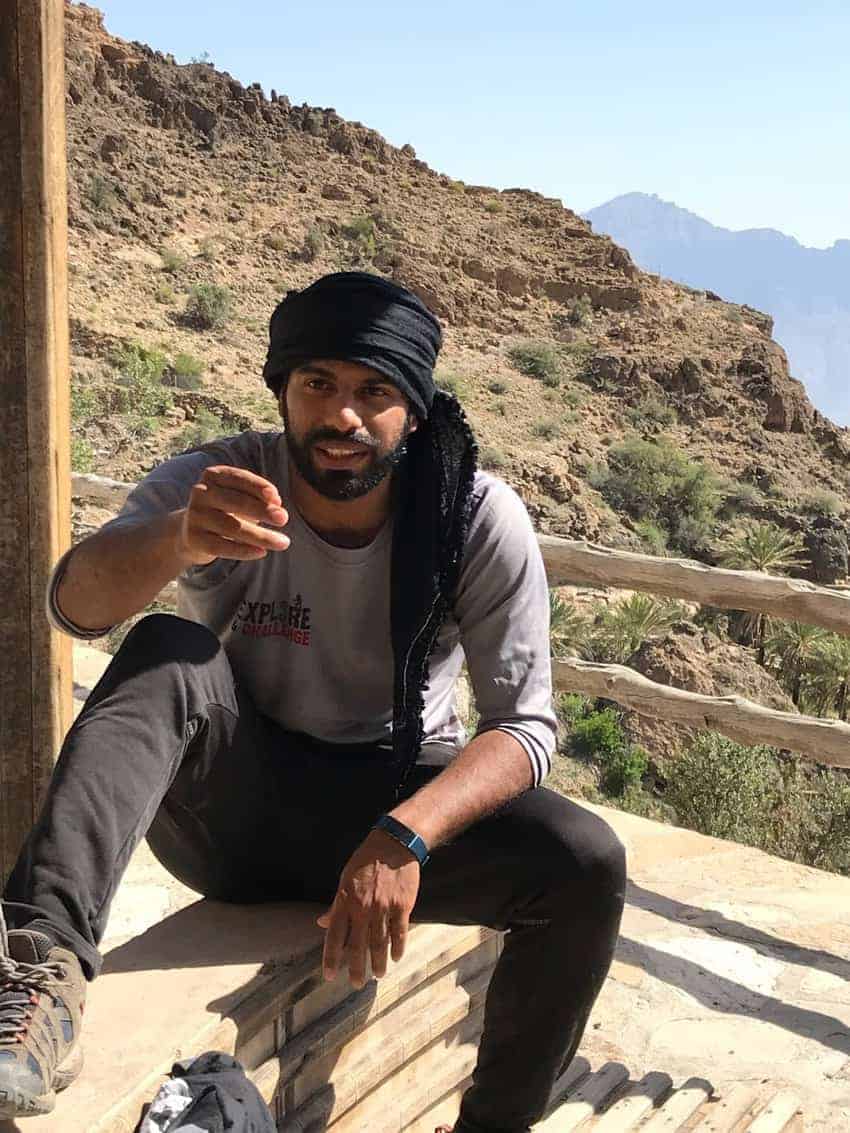
The bonus view when going in December is a view of the white fluffy clouds touching the tip of the mountain. It gives the feeling of really being high up in the sky.
I told myself I would never go again after the first time, but glad I went in December because the views of the clouds touching the mountain and the bright blue sky was quite the feeling of being on top of the world.
No matter what season this hike takes place, it is wise to start climbing down no later than 1 pm to make sure the hike is complete before dark.
General information
Currently, this village is closed for hikes, but when planning your trip, just check with your hotel when arriving. There are a few hiking groups that are on Instagram if solo travel is not on the agenda. A few recommended ones are @exploreandchallenge, @omanadventuresclub and @wadi.adventure.
Conclusion
A variety of hikes and scenery will push your limits, but the views along the way are worth it. Oman is more than just the desert. Hiking allows for the chance to be surrounded by lush green farms, date and fruit trees, boulders in between plants, and traditional stone houses in some parts of the villages.
No matter how many times I have hiked some of these places in Oman, the colors and landscapes are always different. There will always be smiling Omani’s offering their hospitality along the way. People say that if a hike takes two hours, it could end up being four because there is a chance coffee, tea and dates will be offered along the way.
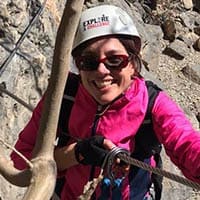 Erin Coyle is currently teaching English in a foundation program at a university in Sur, the Sultanate of Oman. She loves exploring and is always looking for her next destination!
Erin Coyle is currently teaching English in a foundation program at a university in Sur, the Sultanate of Oman. She loves exploring and is always looking for her next destination!
- Valentine’s Day Suggestions…for that Special Person - January 22, 2026
- Missouri Sports Travel Adventure: From Landmarks to Ballparks - January 21, 2026
- What First-Time Visitors Get Wrong About Visiting Iceland - January 15, 2026




